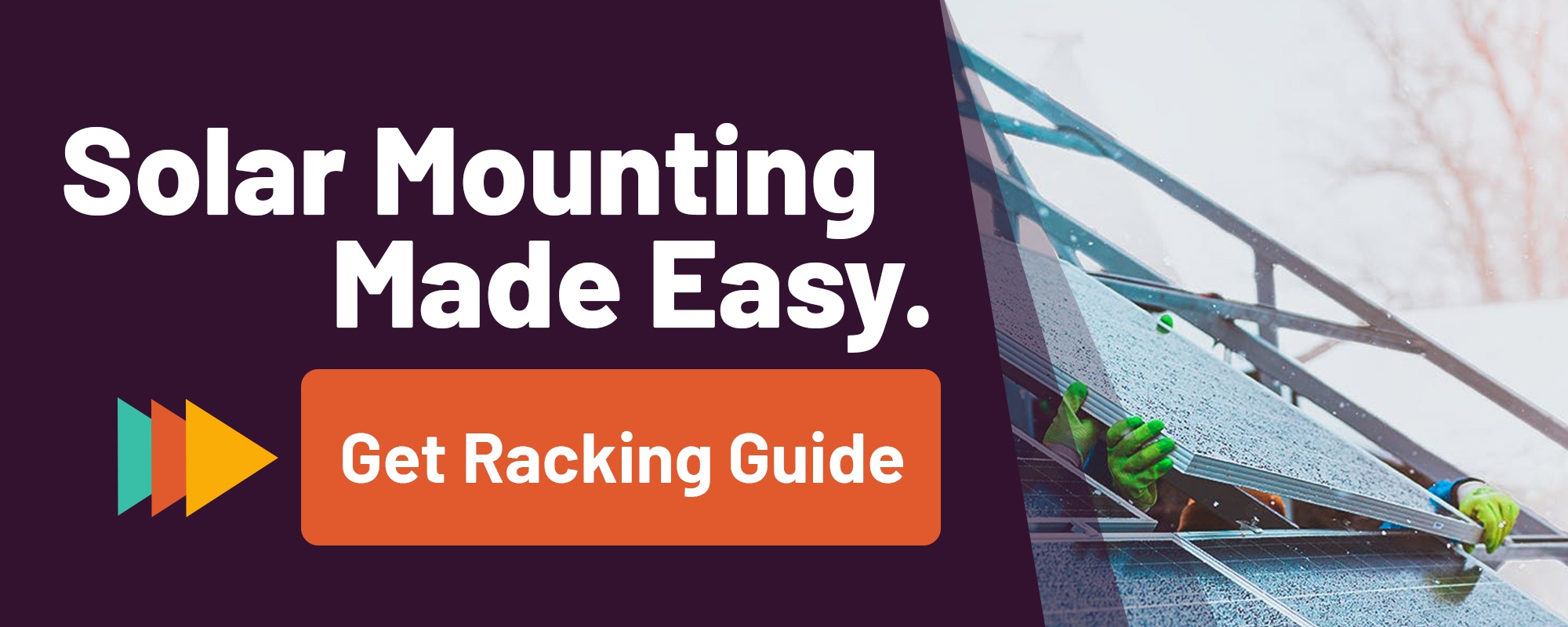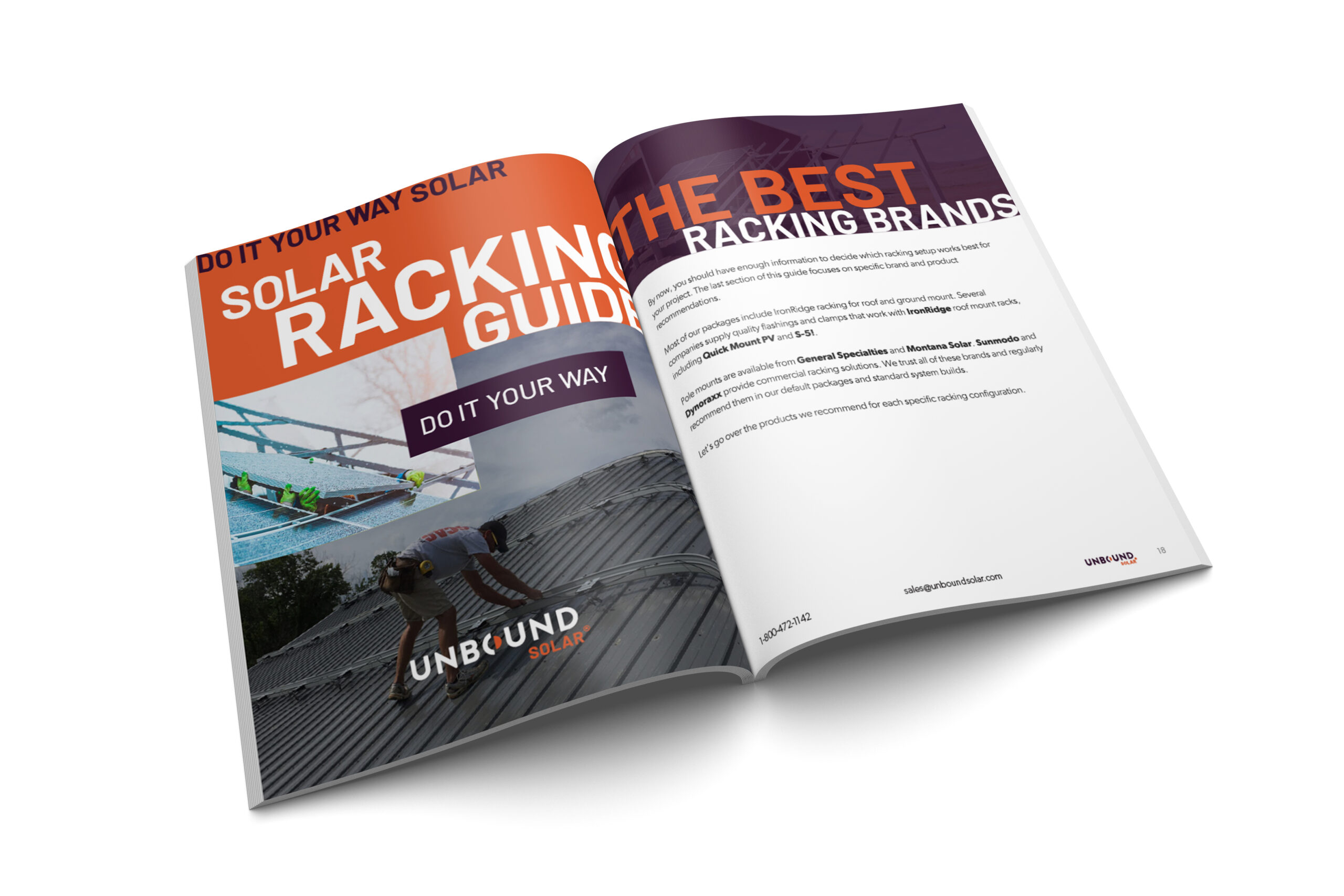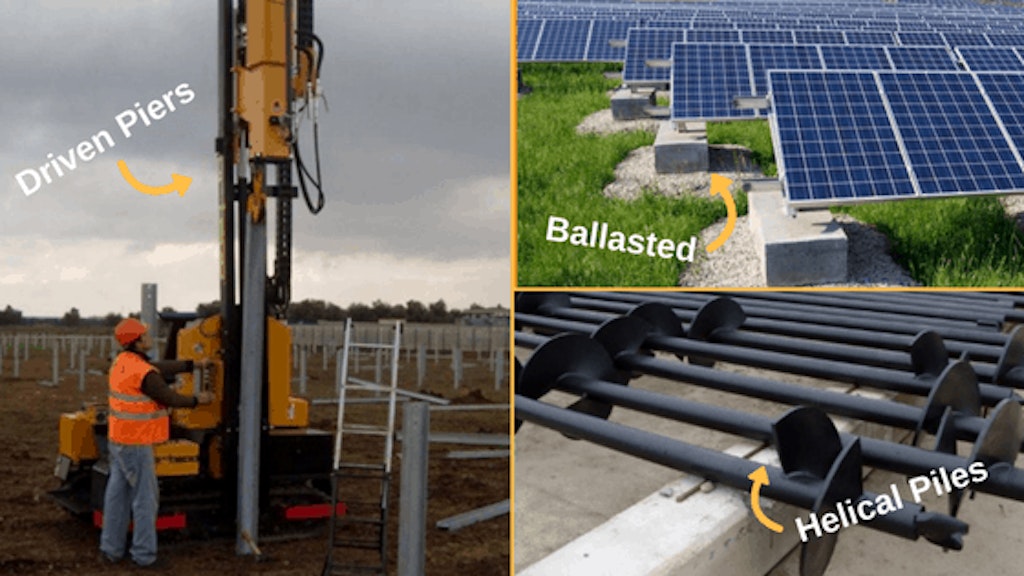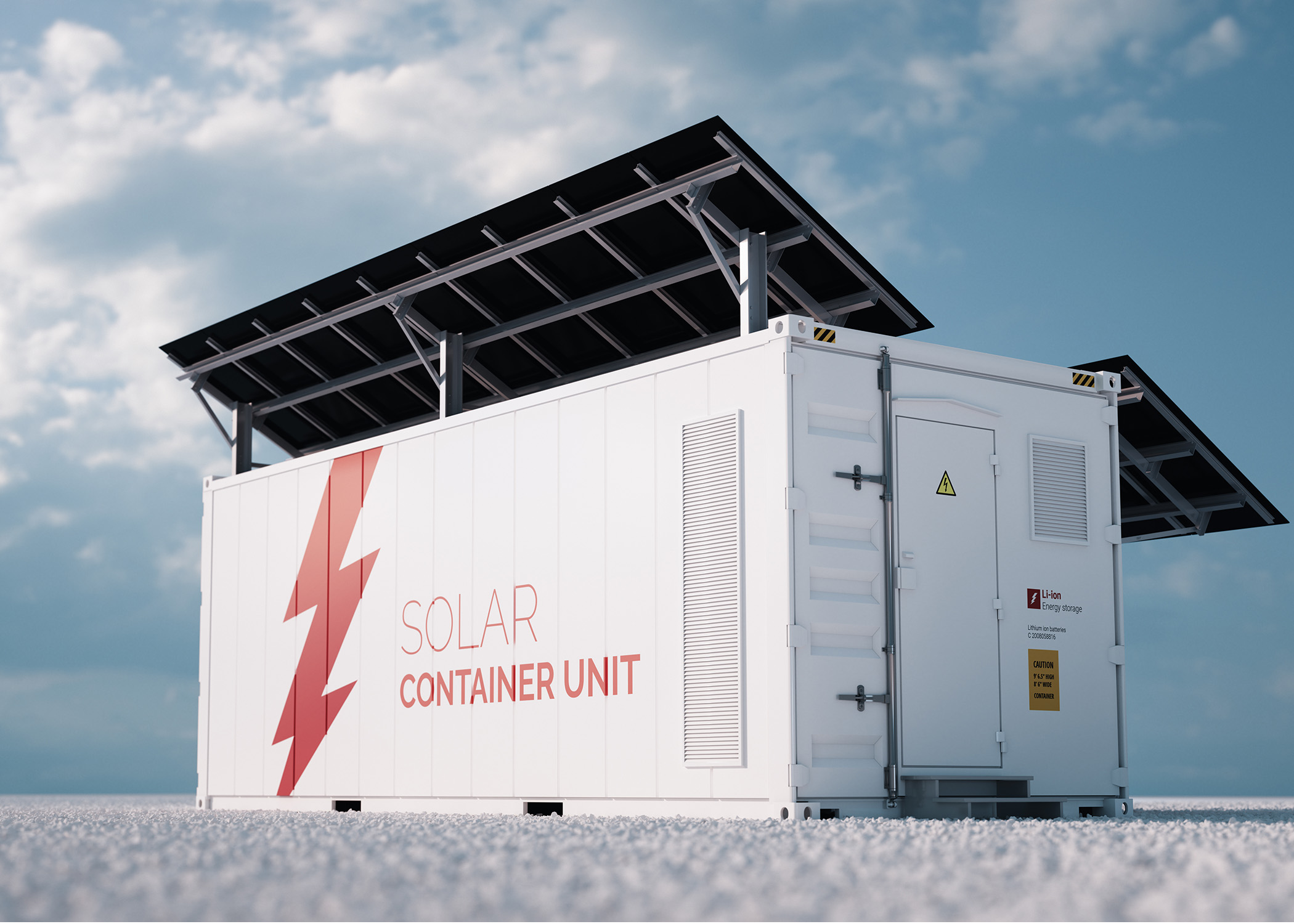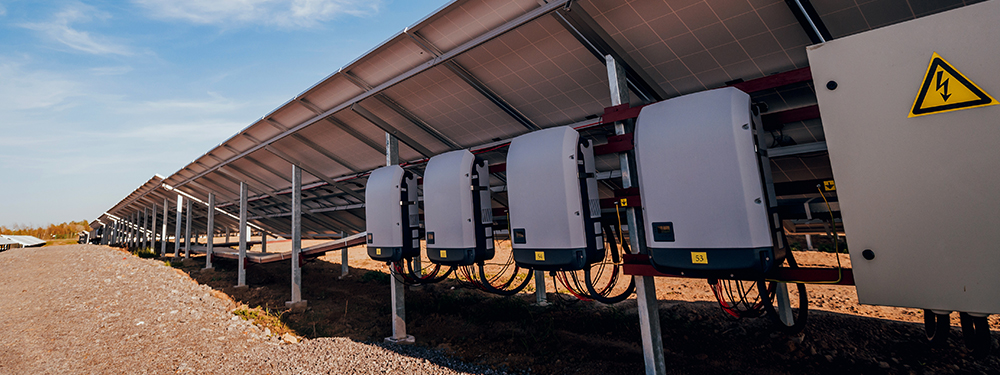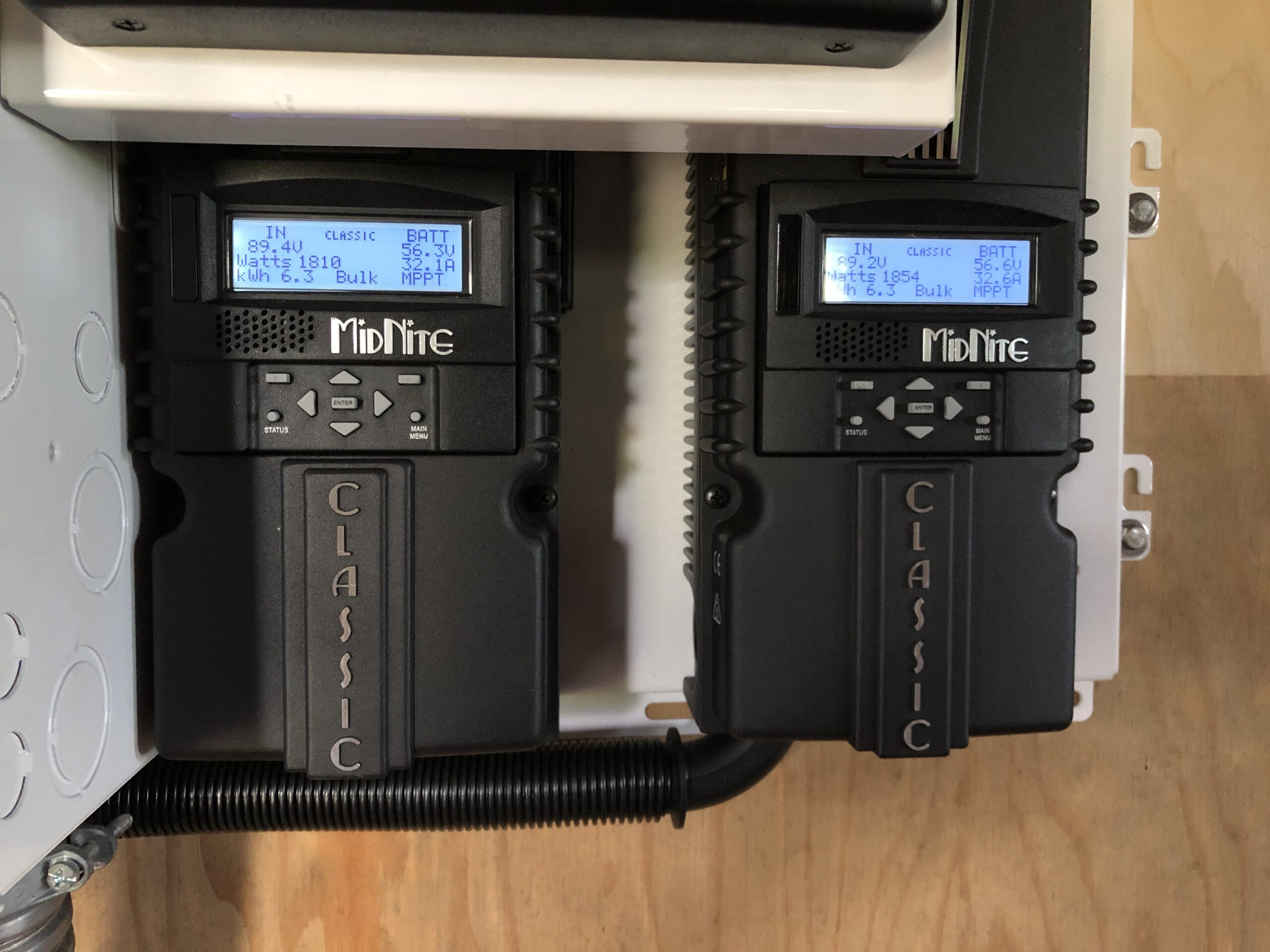If you’ve read about the state & local incentives to go solar and maybe even looked into our free solar cost calculators, you’re likely convinced – going solar is a terrific investment. But once you’ve made the decision to purchase a solar system, that’s when the real questions begin.
If you’re a homeowner that has some acreage to spare, ground-mounted solar panels can be a terrific option for you. Depending on your budget, space, and energy needs, a solar ground-mount system has a lot of benefits.
For starters, the system is easier to access and has no interaction with your roof – which means you don’t have to worry about damaging roofing materials, water leaking into your home, or moving the panels around in the case of a roof replacement.
However, before you bust out the auger, consider these five questions inspired by a conversation I had with solar professional Brady Schimpf. In addition to being the Technical Marketing Engineer at Ironridge, a company that produces mounting hardware for PV solar arrays, Schmipf has a lengthy background in solar installation.
Aside from Schmipf offering up answers to these questions about rooftop solar, he also clued me in on five key things many people misunderstand about ground-mounted solar – and shed some light on major compliance & property line issues that can cause all kinds of costly problems after installation.
Question #1: “What are the different types of ground-mount solar systems and how do I know which one is best for my needs?”
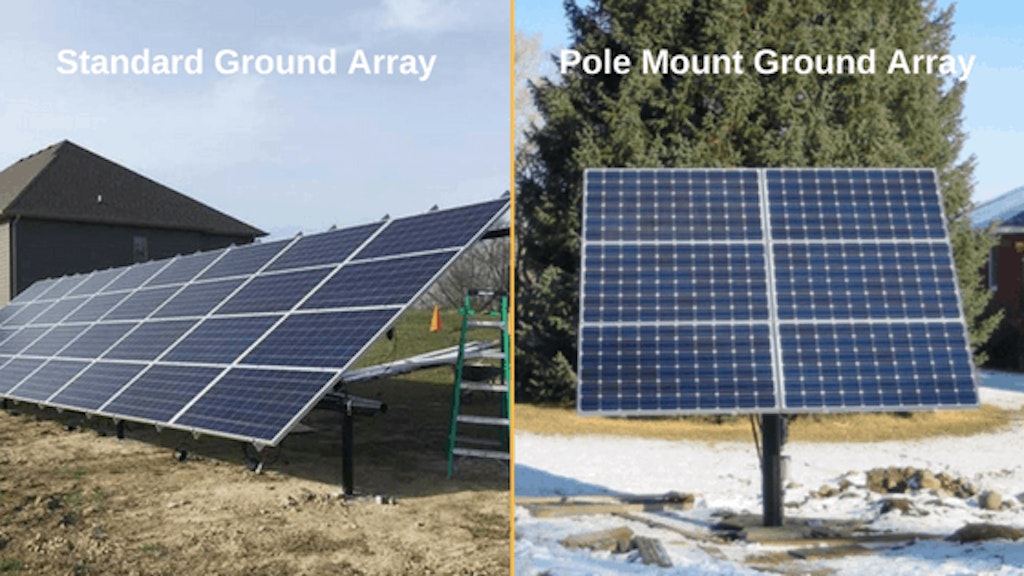
Standard Ground Mount
When most people think of ground-mounted solar panels, they think of the image on the left (as featured in our Dec 2017 install of the month). This is what’s called a standard ground mount – where several poles are placed in the ground, and a racking system is installed on top to hold the solar panels.
The process of building this kind of system is similar to putting together a fence. You would first dig several holes that are a few feet deep, then set the poles in, and fill them with concrete. This structure would create the foundation for holding your solar panels.
A notable feature of a standard ground mount is that the panels are “fixed” – this means the tilt angle and direction is permanent. While the main benefit of this is that it’s cost-effective and easy to install the downside is that there is little to no adjustability and it’s not ideal for areas with extreme snow.
While concrete piers are always the most practical and cost-effective foundation for a standard ground mount, there are alternative foundation options including ballasted, driven piers, and helical piles. These are mainly used for large commercial or utility installations, typically when the soil is too hard or rocky to drill into.
With a ballasted solar system, it’s basically a standard ground mount with an added feature – concrete footings that are above the ground. Driven piers look like a huge pole, and as the name suggests, it gets pile-driven deep into the ground using specialized equipment.
Helical piles, also known as Earth screws, look like a giant screw. They also require special equipment for installation, similar to the driven piers. Additionally, all three alternative foundation options require working with a Professional Engineer (PE).
Pole Mount Solar Panels
Aside from standard ground mounts, you may also consider pole-mounted solar panels. When I consulted solar professional Brady Schimpf, he explained that pole mounts provide some interesting solutions that might apply to your unique situation.
For starters, pole-mounted solar panels are built in a similar way as the standard ground-mounted systems, but instead of digging several holes you would dig one big hole and set a huge pole into it. Then, the solar panels are mounted on top with a built-in tilt and swivel feature that allows you to adjust the panels manually or set up automatic trackers to improve your solar output.
While this sounds pretty appealing, Schimpf reminds consumers that what it really comes down to is the cost per watt. He stated,
“In a residential system it’s way cheaper and equally as effective to add more arrays [solar panels] than have the ability to adjust a smaller array.”
However, there are benefits to a pole mounted system beyond energy output – the adjustable feature also allows you to lift the array above the ground to clear foliage, snow, and other obstructions. The height combined with adjustability makes a pole mount ideal for those that live in snowy climates. On the downside, pole-mounted solar panels are a lot more expensive, require a big concrete footing, and the large pipe is hard to work with.
Question #2: “Does ground-mounted solar have to be off-grid?”
Both grid-tied and off-grid customers can use ground-mounted solar panels. The decision to use ground-mounted solar instead of rooftop solar usually has to do with space. For customers that have some acreage to spare, using ground-mounted solar can be a great option – but if you’re living on a smaller lot, or want a quicker ROI, you might want to conserve space and make use of the real estate on your roof. Ground mounted solar systems tend to be more expensive and labor intensive, but can be more efficient at capturing energy thus saving you more in the long run.
Question #3: “What are some things I should consider before installing ground-mounted solar?”
Before you purchase a ground-mounted solar system, consider the fact that it’s usually a more complicated installation process than putting solar panels on a roof. When you have a roof installation, half of the structure is already built. All you have to install is racking and the solar array. However, with a ground mounted system, you essentially have to build the structure of the roof from scratch, so the solar panels have something to sit on.
When I posed this question to Schimpf, here’s what he had to say:
“[Aside from space] one important thing to consider is your soil type. If you’re not familiar with what it is, you can get a local contractor out to do an evaluation for a reasonable fee.”
And depending on where you live, this could be an essential step. Some cities, especially those with certain soil types, strict building codes, and high earthquake risk, will require you to get your soil inspected and approved before you can move forward with your ground mount design. In that case, a soil engineer would look at the soil to determine its type and make adjustments to the foundation size and requirements of the design.
Keep in mind that all standard ground mount racking comes pre-engineered for all 50 states, but certain conditions in your area like heavy wind and snow and certain soil types may require special designs.
The key point here is that depending on where you live, you might need to meet with a local engineer to get your system approved and built to city standards.
So what are the best type of soil for ground-mounted systems?
Schimpf tells us:
“Basically anything that doesn’t have tons of large rocks and isn’t a hard-pan type material [works] well. Ground-mount works well on almost any other type of soil – it’s only an issue if you get into that [situation] with large rocks in the ground. That’s where it causes problems – but there are alternate ways around that…It’s more costly, but if that’s what you have there are options.”
Some of those options would be the more complicated foundations mentioned above – like ballasted, driven piers, or helical piles.
Question #4: “Do I have to get my property line surveyed before installing ground-mounted solar?”
One of the smartest things you can do before installing a ground-mounted solar array is to get your property line surveyed. According to Schimpf, issues with property lines come up a lot – usually after you’ve spent thousands to install a ground-mounted solar system. He recalled one scenario where a consumer built their solar system too close to the property line and the whole system had to be taken down and moved a foot backward.
“It’s very important to go through that process and understand property line setback requirements because if you install without a permit and you put [the system] too close to the property line, that can be a huge problem if you try to sell your home or get a permit to do other work on your property. Down the road, this can come back as a big issue.”
Property line setback requirements will vary quite a bit depending on what state or county you live in. For example, this document from San Diego County names the property line setback for ground-mounted solar arrays at a minimum of 3 feet. However, this document from the Department of Energy Resources in Massachusetts recommends counties in the state enforce 20-50 foot property line setback requirements (located on page 8).
To save yourself a ton of money and a massive headache, be sure to contact your local authority having jurisdiction (AHJ), which will be either your city or county depending on who issues building permits. To get a permit, you’ll have to go through all kinds of documented processes, including submitting a site plan. If you need assistance navigating the bureaucracy, be sure to download our free permitting guide.
Question #5: “Are ground-mounted solar panels safe & legal in my neighborhood?”
As long as you install your solar system after obtaining a building permit and purchase code-compliant materials, it’s entirely safe and legal. PV solar panels are compatible with most types of land use and permitting is typically handled on a local level.
According to Schimpf, when you install a ground-mounted solar array, there is not as much concern about fire as there is when you install on top of a roof, but UL 2703 code compliancy is still important. UL 2703 is a building code that requires PV solar racking materials, bonding, clamps, etc. to undergo rigorous testing that ensures they have the appropriate structural capacity, can withstand both high surges of electricity and don’t accelerate house fires.
And while the fire hazard element is more critical for rooftop solar panels, you still want to look out for UL 2703 compliant parts and avoid mixing and matching parts from different suppliers, as these parts may not have been tested together on a system level. Additionally, Schimpf recommends you protect the wires coming down from your solar array; they should be enclosed by a channel or raceway so that they’re not left open and exposed causing potential hazards.
